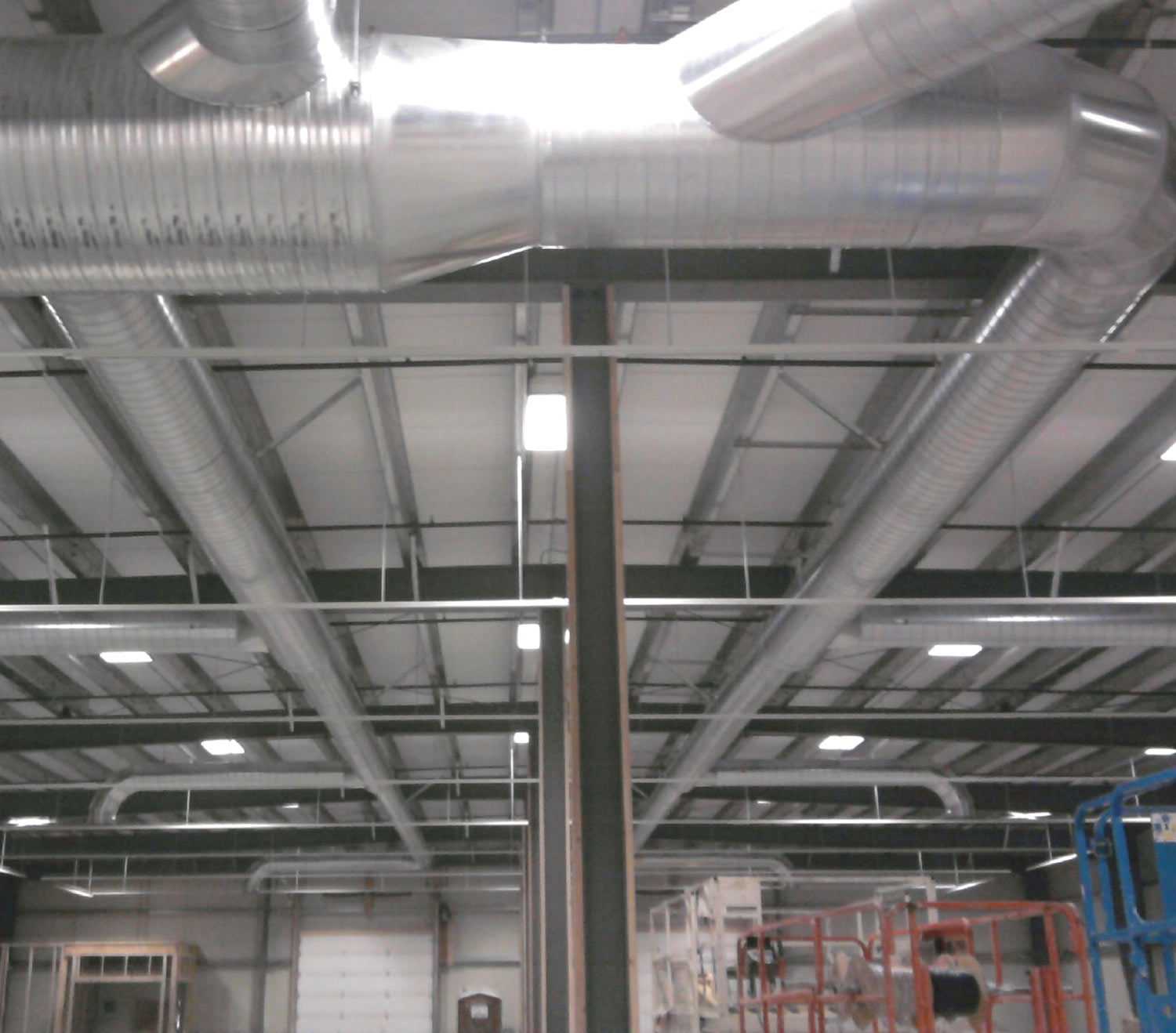
Photos courtesy of Aaron Plumbing and Heating Co.


Photos courtesy of Aaron Plumbing and Heating Co.
ndoor air quality is a trending topic as people transition back to their regular workspaces amidst the continuing COVID-19 pandemic. More than a year ago, many Alaskans began working from home as a safety measure or to monitor their children’s distance learning environments.
Face masks, social distancing, and vaccines provide layers of safety, making it more possible for people to gather in enclosed spaces. Businesses and commercial building owners can add one more layer of protection by improving indoor air quality with proper air filtration.
“All commercial buildings should already have proper HVAC systems to provide proper ventilation,” says Tom Fisher, president, co-owner, and general manager of Aaron Plumbing and Heating Company. “By code, there are specific ventilation requirements depending on the type of use and occupancy classification of a business.”
Fisher says some types of businesses have precise and stringent ventilation requirements for the safety and health of the building occupants. However, it is possible to find residential buildings with minimal or no ventilation systems. In those cases, Fisher says occupants could realize health benefits and added comfort from installing one. He expects the pandemic will eventually change ventilation standards, especially in spaces where large congregations take place.
Fisher says many heating systems within Interior Alaska rely on hydronic-type systems: those which circulate a liquid, generally a glycol mixture, to transfer heat to some type of heating terminal device such as baseboard, unit heaters, ducted heating coils, and radiant convectors. Ducted systems provide ventilation as well as code-required air exchanges depending on the building use and occupancy classification. These systems use air-moving equipment, or air handlers, to bring in outside air, remove the exhaust air, and convey ventilation air to the building occupants via ducted systems. Ducted systems also carry cooling air as needed to provide user comfort. Fisher says ductless, or mini-split, cooling systems are also an economically viable option for buildings that do not have existing duct systems. Ductless systems will support the cooling load, as the cooling load is the variable that will determine the CFM, or cubic feet per minute, of air required, and establish the duct sizes needed for the facility. He adds that cooling systems usually provide cooling via a circulated piped refrigerant or chilled water system.
However, Martin says newer air-handling units can kill or trap the virus by adding a UV light array or a cold plasma array. The UV array sterilizes the air using ultraviolet light, while the cold plasma array ionizes the air, causing fine particles to clump together and, in turn, get caught in the return air filters.
“It’s important for people to know that even though they are socially distancing, the air in most situations is combined and spread to other areas,” says Martin. “When someone is sick in their own office, the air taken from that space is combined with other spaces, heated or cooled, then returned to various spaces, potentially spreading the virus.”
The Centers for Disease Control and Prevention (CDC) calls for a proactive approach to improving indoor air quality. In a March website update, the CDC explained that viral particles spread between people more readily indoors than outdoors, where a light wind can rapidly reduce concentrations. The CDC states that good ventilation strategies can help reduce viral particle concentration indoors, minimizing airborne concentrations and overall viral dose through contact with the eyes, nose, and mouth.
The CDC agrees with Fisher’s assessment that reoccupying a building during the COVID-19 pandemic should not, in most cases, require new building ventilation systems. However, the agency encourages ventilation system upgrades or improvements that can increase the delivery of clean air and dilute potential contaminants using methods outlined by Martin.
Martin says KLEBS is already planning to install new systems in upcoming projects. There had been some interest in UV lighting installed in ductwork for a while, he says, but so far, they’ve seen more requests for improved air filtration.
“We have not seen an uptick in businesses replacing their existing equipment, which is not surprising with the economic instability caused by capacity limitations,” says Martin.
Likewise, Fisher says Aaron Plumbing and Heating has yet to see a significant increase in the number of HVAC installations or upgrades.
“I do believe that there will be an increase in awareness and upgraded standards for indoor air quality that is no doubt propagated by COVID,” says Fisher. “And we will see some significant changes to the standards of the quality of air delivered, recirculated, and transferred in ducted air systems within buildings/work environments. However, these changes and their enforcement will take time to be implemented.”
Ultimately, the CDC encourages building owners to consult experienced HVAC professionals like Fisher and Martin when considering changes to existing systems and equipment. The organization’s website also provides a list of ventilation interventions that can help reduce the concentration of virus particles in the air using less costly methods.
To see that list and other CDC air quality recommendations visit: https://www.cdc.gov/coronavirus/2019-ncov/community/ventilation.html and scroll down to their “Tools to improve” section.